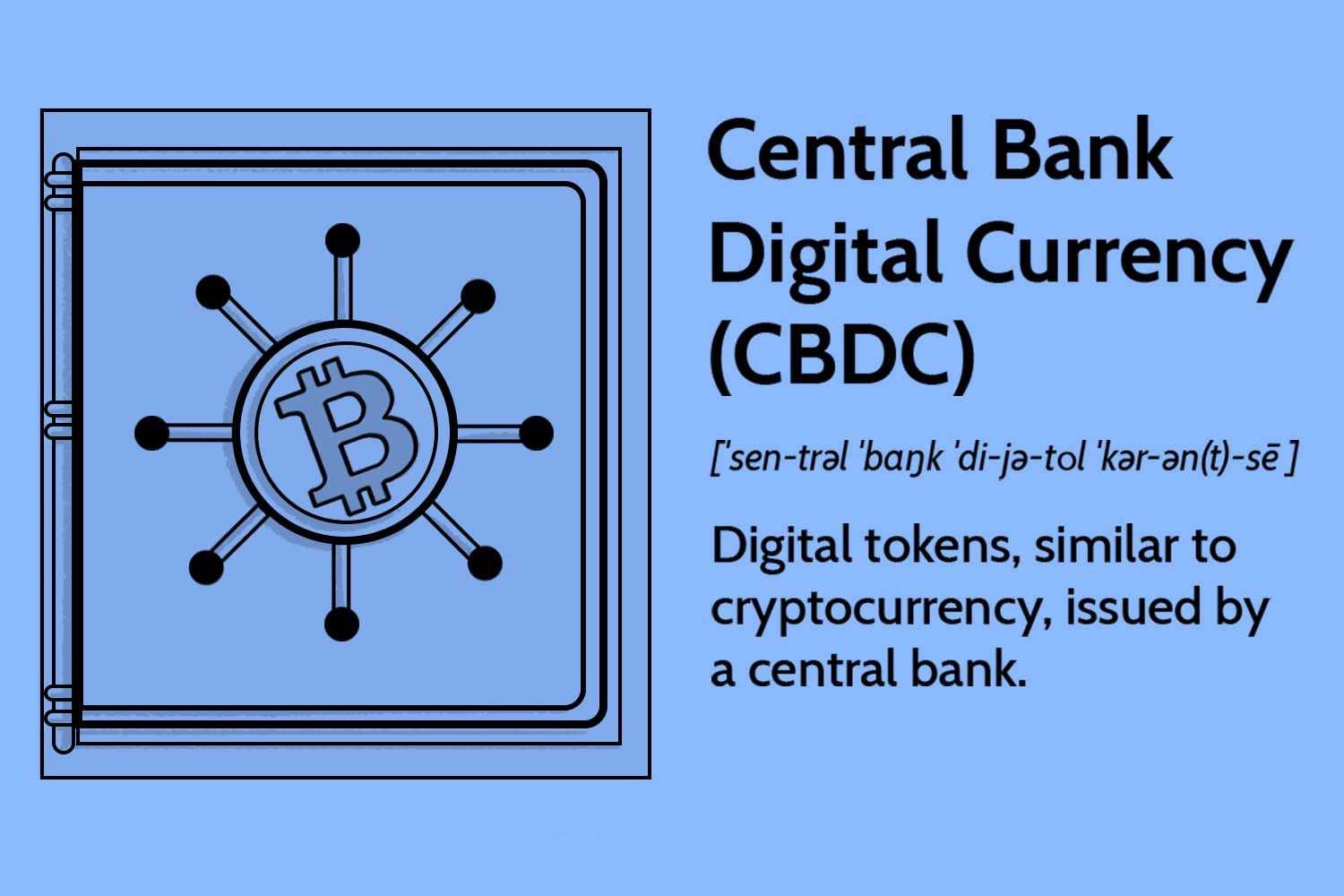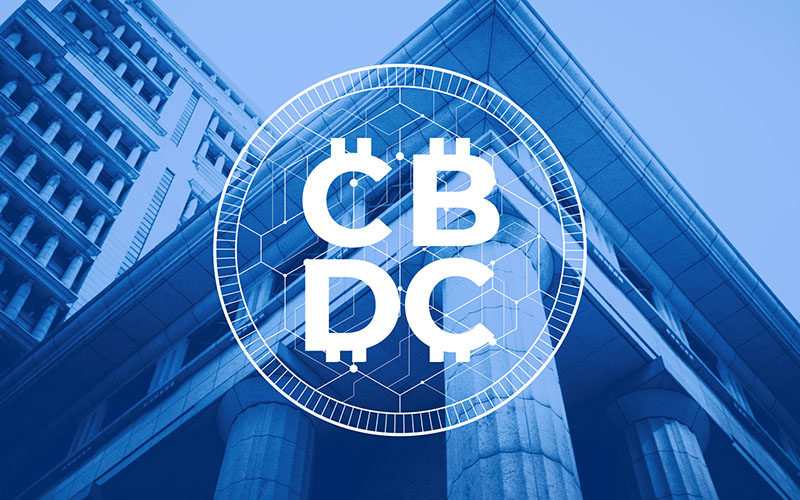Picture your wallet. Now, toss out those old bills and coins because the future could look much different. Imagine a world where every dollar or euro you own is a click away, coded into safe, smart systems. That’s Central bank digital currency (CBDC) for you – the new kid on the block set to revamp how you save, spend, and see money. But why should we switch, and what’s in it for you? Let’s dive into the digital pool and fish out the facts. From what on earth a CBDC is to the good and the risky bits, and from how various countries are stepping into this novel territory to the tech and rules shaping it, we’re unpacking it all. So, ready to see if your future wallet is up for a digital makeover?
Understanding Central Bank Digital Currencies (CBDCs)
What is a CBDC?
A CBDC is like money, but digital. It’s made by a country’s central bank. Just like paper money, you can use it to buy things. But unlike cash, it lives on computers, not in wallets.
CBDCs are special. They are not the same as the money in banks that we use for online shopping. CBDCs are safe since they come from the central bank. They work online, but they are more official than things like Bitcoin.
Central banks around the world are looking at CBDCs. They want to ensure money is easy and safe to use in a world where we buy more online and use less cash. CBDCs also help central banks manage the money supply and guide the economy.
Key differences between CBDCs and Traditional Currencies
CBDCs and normal money are close cousins, not twins. Regular money can be coins, bills, or bits in a bank account. You can hold it or save it in banks. When we spend it online, the bank moves it from our account to someone else’s.
CBDCs are like digital bills. If we use a CBDC, we don’t need a bank to move our money. CBDCs can go directly from buyer to seller. This means we might not have to pay fees to banks. Plus, these digital coins or notes are always exact amounts, helping us spend wisely.
CBDCs are also neat because they help people who don’t have bank accounts. They can make payments with a phone, no banks needed. Everyone could get a public digital wallet from the central bank to keep their CBDCs in.
Next to traditional money, CBDCs are more like stars than flashlights. They shine by themselves, while regular money often needs a bank’s help to glow. This could change how we all use money soon.
The Benefits and Risks of CBDCs
Advantages of Implementing CBDCs
Imagine a wallet that never wears out. It’s there, in your phone, safe and sound. That’s the world with CBDCs, or central bank digital currency. This is your money, reborn in the digital age. It’s like cash but smarter. We all get how easy it is to tap our phones to pay. Well, CBDCs make that even smoother. You could pay your friend back or buy a hot dog without worrying about change.
CBDCs make things fair, too. They help people who don’t use banks a lot. They can join in easily, all thanks to digital fiat currency. Think of CBDC as electronic money issued by the government that reaches everyone. It’s for all of us.
Let’s talk shop. Businesses could pay bills fast, with less fuss. That’s good for their wallets. Plus, central banks can send money direct to us in hard times. That’s not all. CBDCs are top-notch for cross-border payments. Say bye to long waits and high fees. Money would zoom around the globe like never before.
Potential Risks and Challenges
But hold on. Not everything is rosy in digital land. Yes, CBDCs have big perks. But we’ve also got to think about the risks. We start with privacy. Our money tells stories about us. What we buy, where, and when. With CBDCs, the central bank could see all this. That’s a lot of power. We need strong rules to keep our money tales safe.
Next up, cyber thieves. They love new tech. Digital currency means we need top-notch guards. Think of it as building a fortress around our money. We need to keep it safe from hackers poking around.
Now, think about all the banks and businesses around. They count on us using cash and cards. A switch to CBDC could shake things up in a big way. Some could win big, others might struggle. It’s tricky. That’s why we need to chat about this stuff. We’ve got to get it right.
What about the tech stuff? CBDCs run on slick systems. But what happens when they break? We can’t use crashed tech to buy lunch. And we can’t leave anyone out. We need good internet for all so everyone can use CBDCs.
Last but not least, money has rules. Laws keep it clean. No money laundering or funny business. Introducing crypto to the mix changes the game. We’ll need new playbooks to keep it fair and legal.
Yeah, CBDCs are cool. They promise a future where everyone can get and use money easily. But we have work to do. We need to watch the risks and make rock-solid plans. If we get it right, we all get a wallet that never breaks and a money system that works for everyone. It’s a brave new world, and we’re just starting to draw the map.
The Global Landscape of CBDC Development
Progress in CBDC Pilot Programs Worldwide
All around the globe, central banks are testing digital money. It’s like how video games get tested before they hit the shelves. Countries want to make sure their digital money works well and is safe to use. The digital yuan in China is a big deal. They are leading the race. People there can now pay for things using their phones with digital yuan.
Sweden’s e-krona project is also making waves. Just like the digital yuan, the e-krona is money on a phone. But they are still figuring out how to make it work best. In the Bahamas, the Sand Dollar is already out there. It helps people who live on different islands trade easily. In the Caribbean, it’s a star. Now, even the U.S. is peeking at a digital dollar, and Europe talks about a digital euro.
Impact of CBDCs on International Transactions and Trade
Digital money from central banks could change how countries trade. Imagine sending money overseas as easy as texting. Without long waits or big fees. CBDCs use new tech that skips old bank steps, making trade quicker and cheaper. This helps businesses grow and can bring more folks into the money world.
But it’s not only about speed and cost. Digital currency and monetary policy go hand in hand. Central banks can handle money better when it’s digital. They can make sure it’s fair and fights crime. CBDC and financial inclusion mean more people can use banking services, even if they live far from a bank.
With these new CBDCs, people can have a public digital wallet. This is a place on their phone where they keep their money safe. It’s easy to use and helps people trust the system more. Think about how we all used to pay with cash. Now, instead of a physical wallet bulging with bills, we could have a simple app.
Banks now have to think about the risks of digital currency. Things like cybersecurity and privacy are big issues. They want to keep digital wallets safe from hackers. And people are worried about who can see their money moves. We have to build a safe and fair system.
The Bank for International Settlements gives advice on how to do CBDC right. They talk to central banks all over the world. This helps make all these new systems work together. So, if one person sends money across the border, it’s smooth like silk.
Cashless society trend is growing. It means people don’t use cash like they used to. They pay with a tap or a click. CBDCs are part of this big change. They have to make sure people who don’t have much tech can still pay for things. Also, they keep crime fighters happy by stopping money laundering.
In this new world of CBDCs, every country is learning and growing. They share lessons and face challenges together. With each test and pilot program, they get closer to finding out the best way to bring digital money to our wallets. So keep an eye on your phone, that’s where you might soon find your new digital money.
The Technological and Regulatory Framework for CBDCs
Blockchain Technology in CBDC Issuance
Let’s talk about how CBDCs work. CBDCs lean on blockchain, like a digital train track, to move money safe and fast. This tech ties each digital dollar to a secure ledger. So, why use blockchain for CBDCs? Blockchain keeps money safe. Blocks of data link together, making it really hard to mess with them.
Blockchain isn’t just for Bitcoin anymore. Central banks eye it for CBDCs to speed up and secure our cash. It works 24/7 and cuts the middle-man, making things cheaper and faster. Banks need to be really careful here, though. They craft rules to make sure every digital dollar is fair and works well.
Legal and Privacy Considerations
Now, here’s a big question: Can CBDCs be too nosy? Privacy is tricky with digital money. Each CBDC transaction leaves a digital mark. It’s good for catching bad guys, but what about our privacy? Laws must protect us, making sure no one sneaks a peak at our spending. Good rules need to balance keeping our money safe and our privacy in check.
Banks also look at how CBDCs fit with old money laws. They want to make sure digital and paper play nice together. It’s tough making laws for tech that’s always changing. They need to think about tomorrow, not just today. We got to make sure our laws are ready for the future of cash.
CBDCs open doors, bringing more people into money systems. But with big perks come big risks, like hackers. Banks build walls, really strong ones, to keep our digital wallets safe as houses. This all takes a bunch of brainy folks working together: tech whizzes, legal eagles, and money gurus. They all help make sure CBDCs are a safe bet for our wallets.
In the end, getting CBDCs right means taking it slow. Testing every turn and button keeps them from going off the tracks. Tiny test runs, like China’s digital yuan or Sweden’s e-krona, help banks learn and tweak. This isn’t a race. We want our digital wallet to be as comfy and secure as our old leather one.
Experts hop in, too, like the Bank for International Settlements. They’re like a hub for banks around the world. They share brainy thoughts on making CBDCs the best they can be. This way, no one’s reinventing the wheel – we’re building a better one together.
We’re all in this big shift from coins to codes. It’s an exciting journey, figuring out how to keep our money safe. We want to say bye to the bulky wallet and hi to something sleek – a cool, digital wallet that travels light but packs a punch. It’s all about creating a cashless society that’s not just shiny, but also rock solid and fair for everyone.
We’ve explored what CBDCs are and how they stand out from usual money. We know their benefits, like fast transfers and less cost. But we can’t ignore the risks—privacy issues and tech challenges need close looks. Countries around the world are testing CBDCs out. They’re seeing how these digital bucks could change the way we trade across borders. Laws and tech stuff are also big deals for making CBDCs work right.
To wrap it up, CBDCs might be a big part of how money moves in the future. They could make things easier and quicker for everyone. Still, we’ve got to watch out and solve some tricky problems. I’ll keep digging into this world of digital money, and share what I learn. Stay tuned, and let’s see where this CBDC journey takes us!
Q&A :
What is a Central Bank Digital Currency (CBDC)?
A Central Bank Digital Currency (CBDC) is a digital form of central bank money that is widely accessible to the general public. Unlike decentralized cryptocurrencies like Bitcoin, a CBDC is issued and regulated by a nation’s central bank and represents a digital extension of their physical money supply. It is designed to be used alongside traditional currency, offering a new, secure, and efficient means of payment and value storage.
How does a Central Bank Digital Currency differ from cryptocurrencies?
Although both CBDCs and cryptocurrencies are digital currencies, they have distinct differences. Cryptocurrencies operate on a decentralized network using blockchain technology, while CBDCs are issued and governed by a central authority – the nation’s central bank. Unlike the often volatile and speculative nature of cryptocurrencies, CBDCs aim to offer stability and reliability with the backing of a nation’s government and monetary policy.
What are the potential benefits of using a CBDC?
The potential benefits of CBDCs include enhanced efficiency in both domestic and international payments, lower transaction costs, and reduced settlement times. They may also offer improved financial inclusion by providing an accessible digital means of payment to those without access to traditional banking. Additionally, CBDCs can strengthen monetary policy effectiveness and enhance the security and resilience of payment systems.
Are there any risks associated with Central Bank Digital Currencies?
As with any financial system innovation, CBDCs do carry potential risks. These include concerns regarding privacy, data security, and the risk of cyber attacks. The widespread adoption of CBDCs might also change the traditional role of commercial banks in the monetary system, potentially affecting lending and economic stability. Careful design and regulation are required to mitigate these risks.
Which countries are currently exploring or have launched a Central Bank Digital Currency?
A growing number of countries are actively exploring or have launched CBDC projects in various stages. For example, the Bahamas has launched the Sand Dollar, China is running pilots for a digital yuan, Sweden is testing an e-krona, and the European Central Bank is considering a digital euro. This landscape is rapidly evolving as central banks worldwide aim to respond to the changing nature of money and payments.






